Matt Wedel is an artist who works in clay to make sculptures. Some of his sculptures are small enough to be held and other times they are taller than most adults. Let’s take a closer look at this piece in the LSU Museum of Art Permanent Collection—Make sure you look at all of the details to find clues about the artwork and the artist.
What do you think this sculpture was made out of? Why do you think that?
What kind of characteristics does this sculpture have—Think about how you would describe it to someone who has never seen it before. Use at least four adjectives to describe the texture.
What do you think the sculpture depicts? Is it something you have seen before or is it abstract?
What tools do you think Matt used to create this sculpture?
IMAGE: Matt Wedel, Flower Tree, 2018, porcelain, Gift of the artist
For more inspiration, view installation photos of Wedel’s work from his exhibition at LSU MOA Matt Wedel: On the Verge: click here
Now that we have taken a closer look and thought about Matt Wedel’s sculpture, let’s try our hands at making our own.
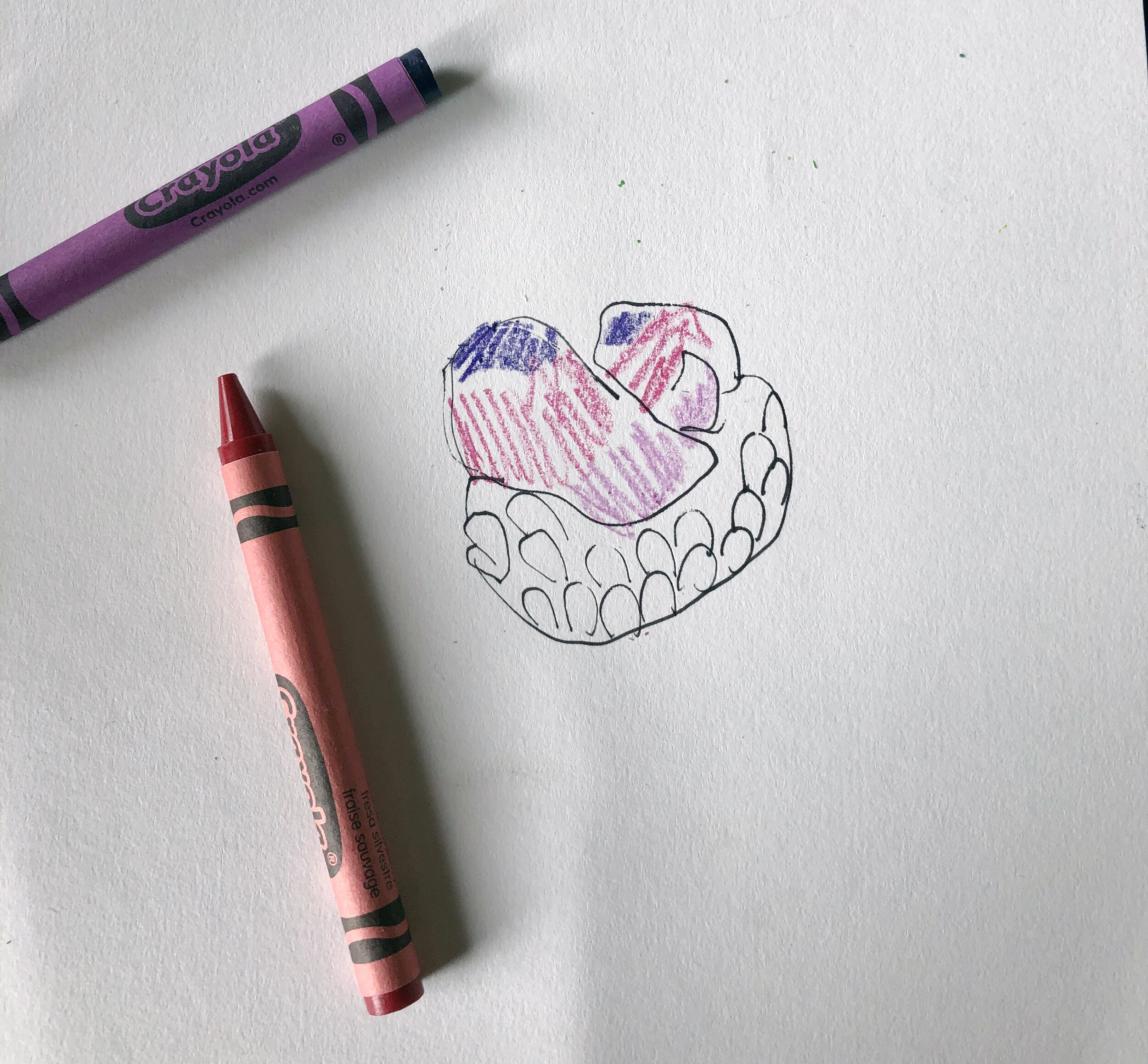
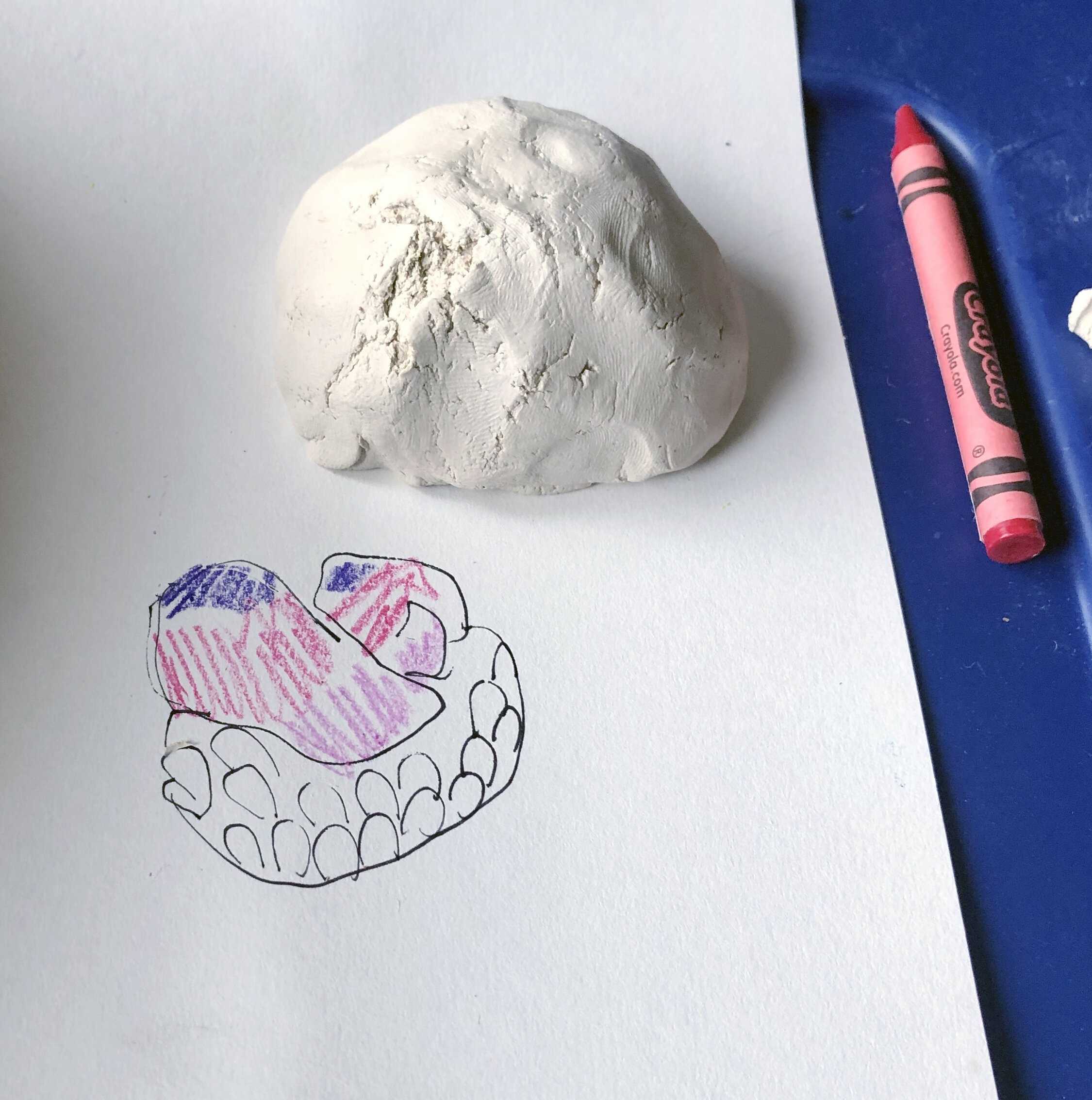
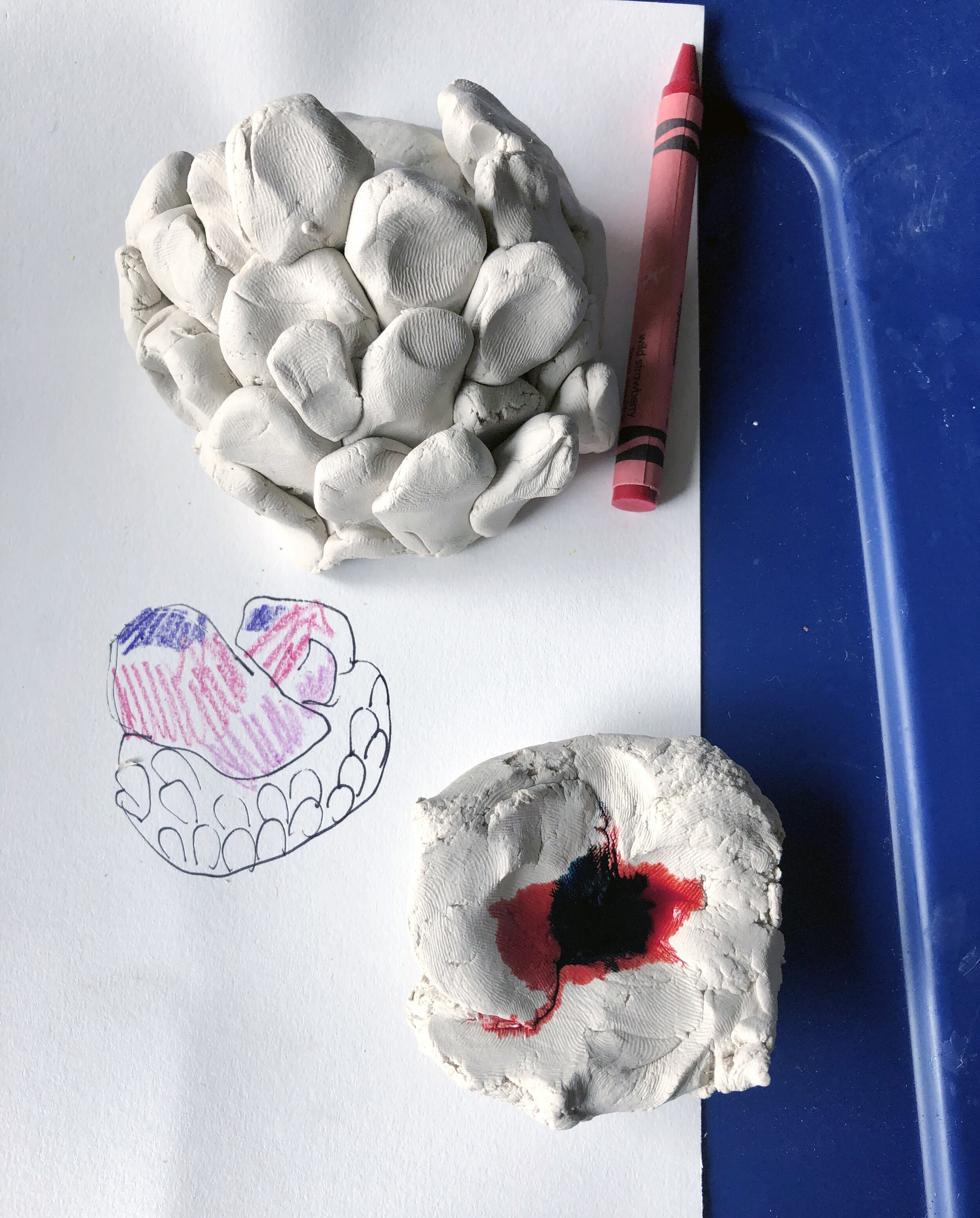
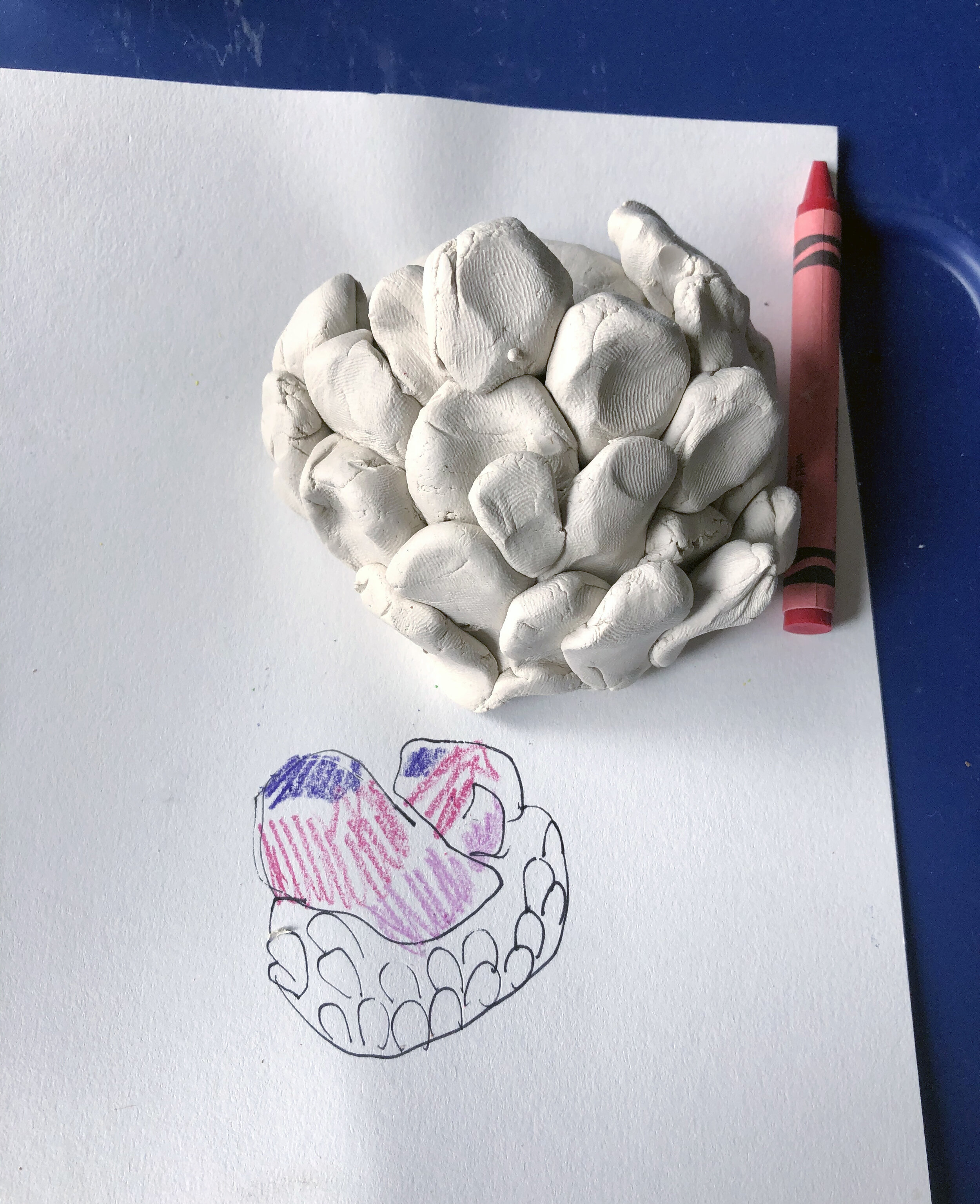
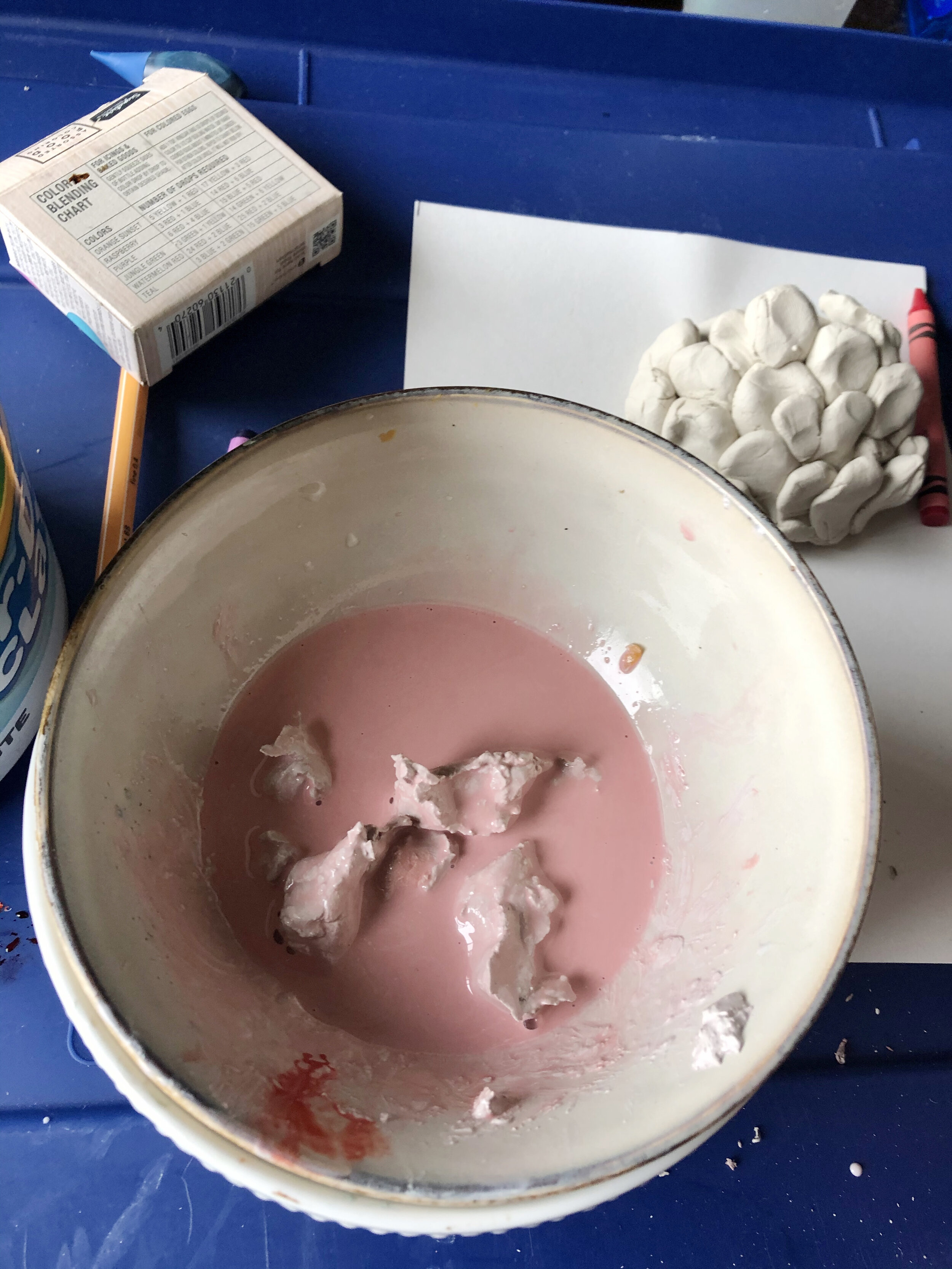
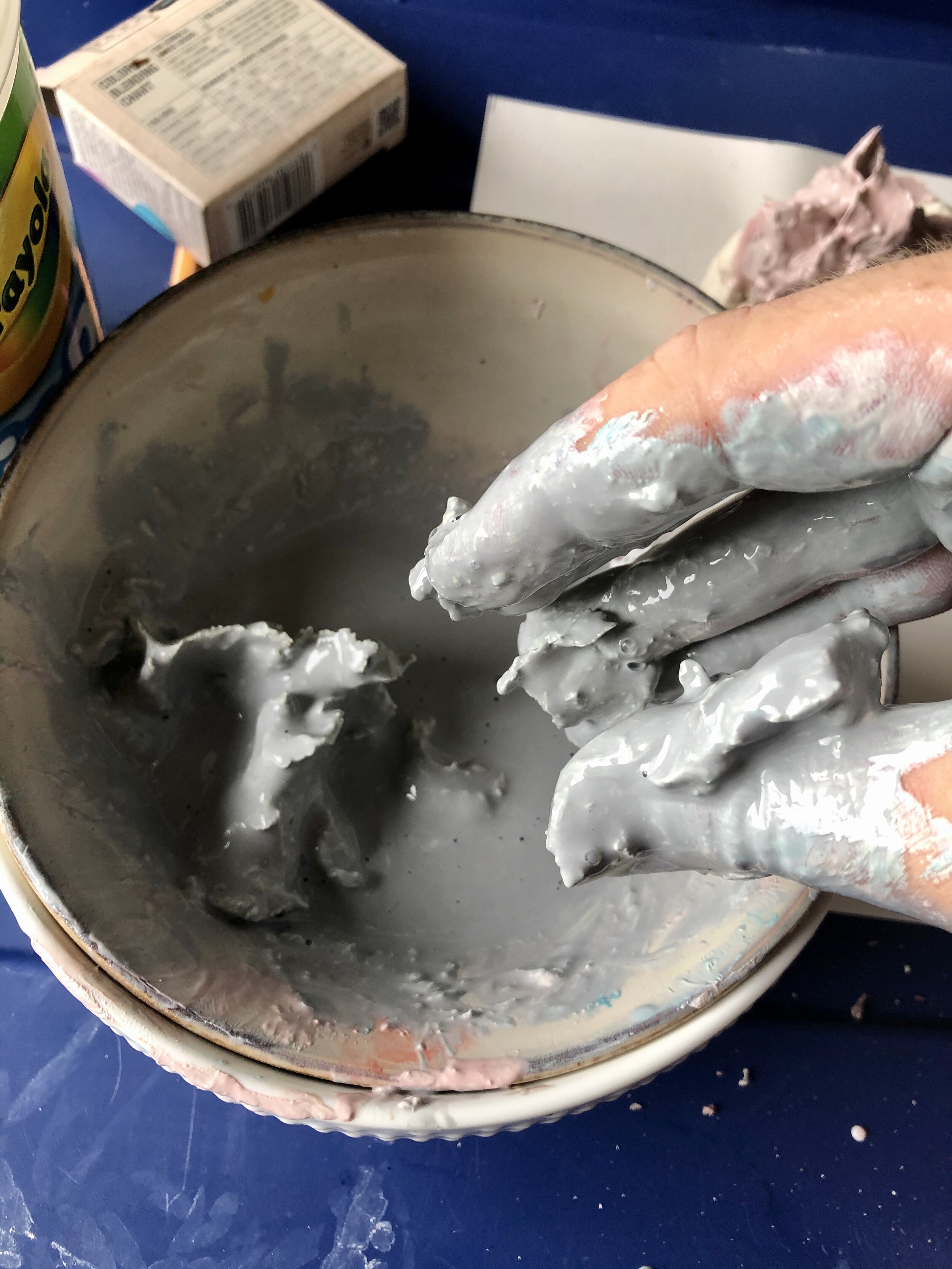
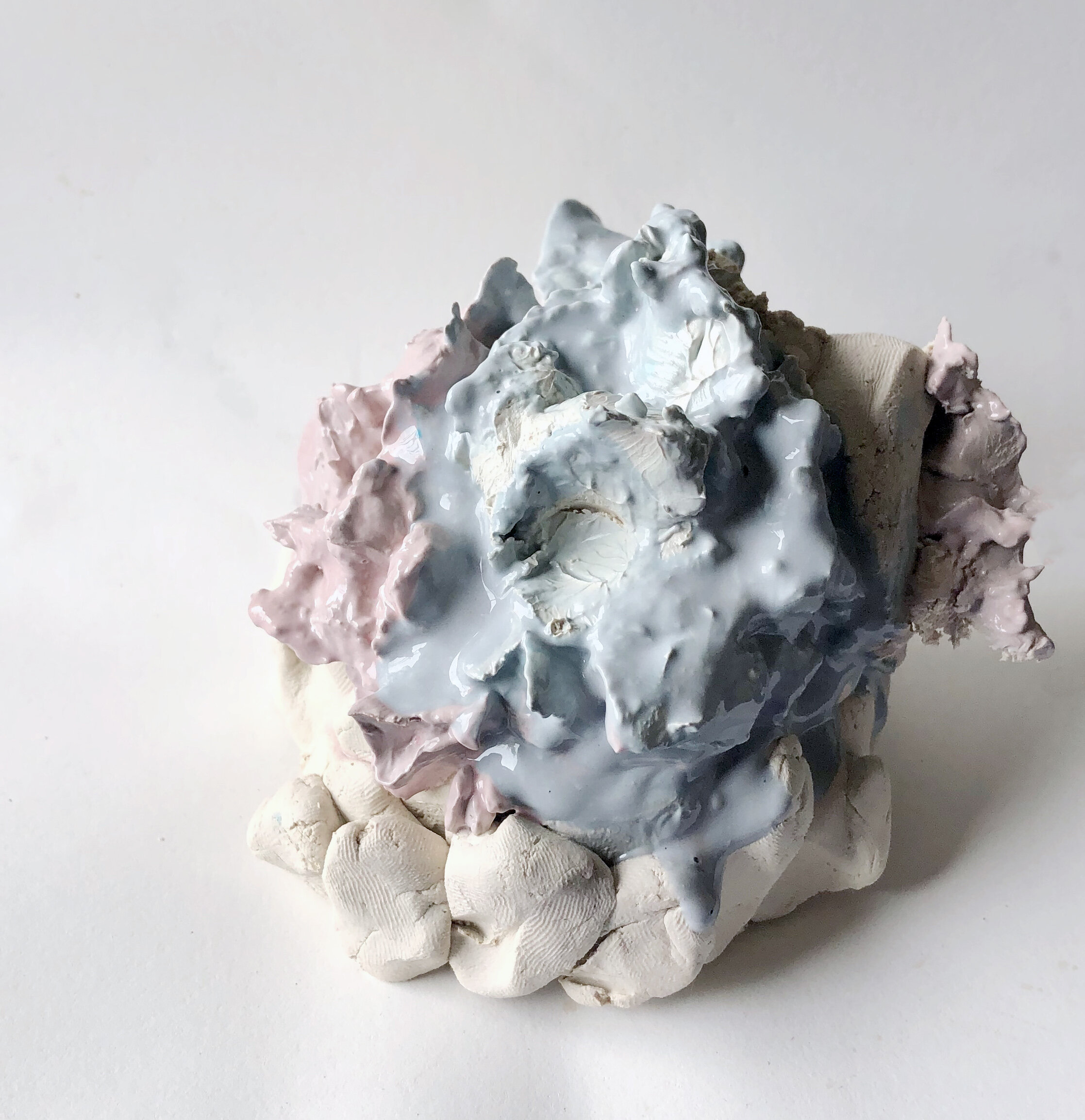
Supplies:
Clay/play-dough/salt-dough
Food dye or acrylic paint
A bowl with water
Paper
Pencil or crayon
Plastic tablecloth *this is a messy project so plan accordingly
Steps:
Look at Matt Wedel’s work again. Sketch out an idea of what you would like your mini sculpture to look like.
Take a handful of your clay and roll into a ball. Using your thumb, press into the center of the clay to make a hole. Use your fingers to pinch the clay to make a bowl. Now flip it over— you have the base of your sculpture.
Matt Wedel uses little petals or scales in his work. Take smaller of clay and pinch them into petal shapes. Press these into the base of your sculpture— you will want to cover it with these shapes.
Take some clay and add it to the bowl of water. Matt uses colored slip to create the fluffy textured parts in his sculptures. Add a couple of drops of food dye or acrylic paint and start smushing your clay in the water. We want it to feel pretty soft. Take it out the water and press it on top of your sculpture. Don’t fuss with it too much— we want this to look organic and natural. Continue to add different colored parts.
When you have completed your sculpture, let it dry.
Take a piece of paper and draw what you created. Think about what kind of environment you think it belongs in—Does it look like coral in the ocean, or maybe something from another planet. Draw an environment for your sculpture— use details. What might live in that environment—fish, aliens, birds? Use your imagination!

